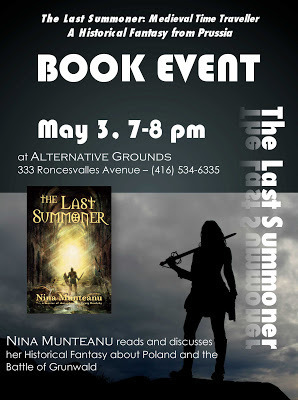Nina Munteanu's Blog, page 11
June 25, 2013
World War Z Reviewed: Mother Nature is a Serial Killer
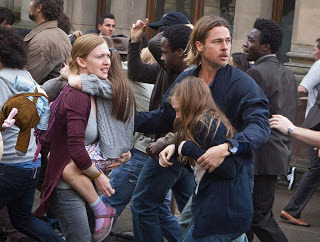
I don’t watch zombie movies.
I steer away from them. I find them generally
tasteless, unimaginative and lacking anything remotely connected to “story”.
Most appear, at least from their trailers, to focus on violence and gore with little interest in anything else (what
could be more gruesome than a person stalking then eating another?).
As a writer of science fiction and fantasy and avid fan of
this genre in motion pictures, I lamented that zombies had become the “in thing”
in stories and film these days. We’d just gotten over werewolves and vampires. Now I
felt doomed by an infestation of the “undead”. I mean, how many ways can you
portray such listless deadbeats?
Now there’s the action thriller “World War Z”. Despite my
intrigue with the trailer, it took my trusted friend’s insistence for me to go
see it.
I was vindicated in my trust of her good taste.
"World War Z" is not your typical zombie movie. In fact, to
call it a zombie movie is to fail to acknowledge the deeper thematic
reflections portrayed. What struck most was that this action thriller focused
less on what zombies did (all that missing blood and gore that some reviewers lamented
over gave me relief and gratitude) than on the effect of a plague that turned
most of humanity into them. It actually had a story! While the
motion picture apparently honored the iconic lore and criteria established in the
zombie mythos, director Marc Forster and screen writers J. Michael Straczynski
and Matthew Michael Carnahan (based on the book by Max Brooks) cleverly did not
let themselves be limited by it. In fact, zombies per se serve more as plot tools in a far more interesting and
deeper story arc and theme.
I’m referring to the subtle notes of ecology, biology and
co-evolution interlaced throughout this visually stunning and rather disturbing
film. What happens when you disturb Nature? The opening titles and scenes show a montage of curious and subtly dark reflections
on the consequences of our general indifference to Nature and her growing
unbalanced ecosystems. “Mother Nature is a serial killer,” virologist Andrew
Fassbach tells our hero during his first—and last—ten minutes on screen. During that short time
they spend together, Fassbach shares some key insights into how Gaia plays. And
she doesn’t always play “fair”. Fassbach also tells us that this zombie plague
started with a virus. Which brings up some interesting questions. Was it an
“intelligent virus”, manufactured and introduced? Did the virus co-evolve with some organism as an aggressive symbiont and was spontaneously triggered by a disturbance? What was that disturbance and was it an accident or a mistake? How did it come to be?
I didn’t fail to notice the reference to swarming ant
colonies in the title montage that foreshadowed a
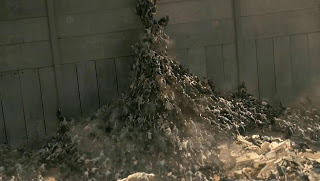
later scene of zombies piling
onto each other on the walls of Jerusalem in a frenzied search for warm bodies
to eat. This is clearly a film about Nature’s powers and mysteries. You can be
sure that questions about what triggered and defined the zombie plague will be
addressed in the sequel, already scheduled. Because, like any serial killer, Mother
Nature wants to be caught, says Fassbach.
Co-Evolution &
Symbiogenesis
Which brings me to what this film really touches on: how
Mother Nature takes care of herself and her own… whether we like it or not. The
key is evolution and something called co-evolution: this is when two normal
aggressors cooperate in an evolutionary partnership to benefit each other.
Ehrlich and Raven coined co-evolution to explain how butterflies and their host
plants developed in parallel. I wrote about it in an earlier post called
“Co-evolution: Cooperation & Aggressive Symbiosis”

Virologist Frank
Ryan calls co-evolution “a wonderful marriage in nature—a partnership in which
the definition of predator and prey blurs, until it seems to metamorphose to
something altogether different.” Co-evolution is now an established theme in
the biology of virus-host relationships. The ecological “home” of the virus is the genome of any potential host
and scientists have remained baffled by the overwhelming evidence for
‘accommodation’.
“Today...every
monkey, baboon, chimpanzee and gorilla is carrying at least ten different
species of symbiotic viruses," says Ryan.
“Why,” asks Ryan,
“is co-evolution [and its partner, symbiosis] such a common pattern in nature?”
Ryan coined the term “genomic intelligence” to explain the form of intelligence
exerted by viruses and the capacity of the genome to be both receptive and
responsive to nature. It involves an incredible interaction between the genetic
template and nature that governs even viruses. Symbiosis and natural selection
need not be viewed as mutually contradictory. Russian biologists, Andrei
Famintsyn and Konstantine Merezhkovskii invented the term “symbiogenesis” to
explain the fantastic synthesis of new living organisms from symbiotic unions.
Citing the evolution of mitochondria and the chloroplast within a primitive
host cell to form the more complex eukaryotic cell (as originally theorized by
Lynn Margulis), Ryan noted that “it would be hard to imagine how the step by
step gradualism of natural selection could have resulted in this brazenly
passionate intercourse of life!”
Aggressive Symbiosis
In his book, “Virus
X” Dr. Frank Ryan coined the term “aggressive symbiont” to explain a common
form of symbiosis where one or both symbiotic partners demonstrates an
aggressive and potentially harmful effect on the other’s competitor or
potential predator. Examples abound, but a few are worth mentioning here. In
the South American forests, a species of acacia tree produces a waxy berry of
protein at the ends of its leaves that provides nourishment for the
growing infants of the ant colony residing in the tree. The ants, in turn not
only keep the foliage clear of herbivores and preying insects through a
stinging assault, but they make hunting forays into the wilderness of the tree,
destroying the growing shoots of potential rivals to the acacia. Viruses commonly
form “aggressive symbiotic” relationships with their hosts, one example of
which is the herpes-B virus, Herpesvirus saimiri, and the squirrel monkey (the
virus induces cancer in the competing marmoset monkey). Ryan suggests that the
Ebola and hantavirus outbreaks follow a similar pattern of “aggressive
symbiosis”. All you need is a perceived hostile trigger. A disturbance in an
otherwise balanced ecosystem, for instance.
Aggressive Symbiosis & Human History
The historian,
William H. McNeill, suggested that a form of “aggressive symbiosis” played a
key role in the history of human civilization. “At every level of
organization—molecular, cellular, organismic, and social—one confronts
equilibrium [symbiotic] patterns. Within such equilibria, any alteration from
‘outside’ tends to provoke compensatory changes [aggressive symbiosis]
throughout the system to minimize overall upheaval.”
So…what triggered
the zombie plague of "World War Z"? And how will humanity prevail in this new
paradigm of nature? I guess we’ll have to watch the sequel…
Published on June 25, 2013 12:42
May 31, 2013
Starfire

You Are Light
I am Earth
You are Air, I am Wind
You are Sound, I am Frequency
You are Word, I am Scribe
You are Star
I am Flame
Together, we are starfire…
Mem lamed hey
Published on May 31, 2013 05:16
May 23, 2013
Nina Munteanu Signing The Last Summoner at Chapters Markham
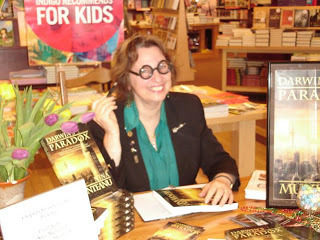
Nina wearing her intelligence glasses...
I'm signing my latest historical fantasy The Last Summoner at Chapters in Markham (Woodside Mall) on Saturday May 25th at 1-4 pm.
Come join me for lively discussion, argument, laughter and debate on the "what ifs" of history and on feisty lady knights, medieval battles and customs, and time travel.
Get your personally autographed book of The Last Summoner , three months on Amazon's Bestseller list. Special "prize" for 50th customer! :)
Published on May 23, 2013 15:00
May 19, 2013
Nina Munteanu Discusses The Last Summoner at Alternative Grounds

A few Fridays ago I had the pleasure of doing a lecture / discussion and reading of The
Last Summoner in the Roncy district of Toronto. The historical fantasy takes us back to Poland in 1410 on the
eve of the Battle of Grunwald between the warrior monks of the Teutonic Order
and their oppressed Prussian slaves. The Lady Vivianne Schoen, Baronness von
Grunwald has a vision … a vision of a different battle. And a different world. When
she discovers that she can alter history, she is branded
and chased as a witch. Vivianne flees through a time-space tear to an alternate
present-day France, ruled by Teutonic Black Knights; where she must decide how
to remake the history she authored...Every choice has its price...

The Venue
Located on
333 Roncesvalles Avenue, in the heart of the Polish District (affectionately
known as Roncy), Alternative Grounds is a cool funky intellectual granola kind
of coffee house. LOL! What does that mean? Deep with high ceilings, the café
opens into an eclectic assortment of tables and seats that range from old 60’s
vinyl chairs to comfortable couches, surrounded by warm shades of brick wall,
adorned with original art work and wooden shelves. A small globe of the world sits on one table.
You help yourself to one of a variety of unique mugs and fill up with fresh
roasted fair trade coffee. People sit in groups, chatting, or alone with their
laptops. Many are obviously regulars. You can see it in their body language;
like the place belongs to them.
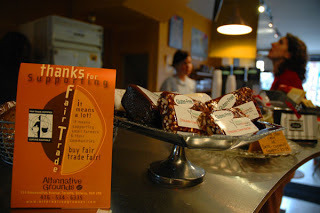
“Alternative
Grounds Coffee House and Roastery is a community-based business,” says Linda Burnside, owner. “We believe that the practice of business and the strengthening
of community should go hand-in-hand.” Their café is rooted in the concept of
“welcome”, evident in the arrangement
The Coffee
Alternative
Grounds originated in 1995 as a roaster of only fairly traded coffees; back
when little attention was paid to fairtrade and why it was important, says
Linda. Alternative Grounds was one of the first licensees when
in 1998 Fair TradeMark Canada, an independent fair trade licensing and
regulatory body came into being. They are the only roaster in the area that
roasts solely fair trade coffees and in 2005 they became a certified organic
processor.
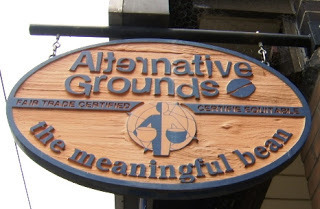
Alternative
Grounds Café roasts and custom blends their coffees daily, providing the
highest and freshest quality coffee you can get and supports the people who
actually grow the beans and are stewards of the land. That’s what fair trade
means. “It also helps show that there are other ways of doing business, ways
based on mutual trust, cooperation and respect,” says Linda. They are a member
of Cooperative Coffees, which allows them to access a wide variety of coffees
and collectively contribute to the development and support of emerging
cooperatives. It’s a win-win scenario.
Published on May 19, 2013 17:54
May 14, 2013
The Journal Writer by Nina Munteanu Now Out
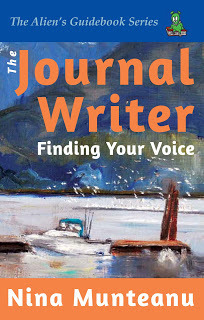
The second
book in my Alien Guidebook Series The Journal Writer: Finding Your Voice was released in March 25, 2013 by Pixl Press
(an imprint of Starfire World Syndicate) and is now in bookstores around the
world, including Chapters, Barnes & Noble, Amazon and other quality
bookstores.
The Journal
Writer: Finding Your Voice is a guidebook for anyone who writes. It provides
steps on how to get started in journaling, how to keep going and how to keep
safe. I discuss the full range in expression from writing on the computer, the
use of social media and sharing on the Internet to the benefits of good
old-fashioned handwriting on paper.
Here’s a small excerpt of the book taken from
the Introduction:
There are as many reasons for writing a journal as there are
people in the world: to express, to heal and clarify, to create, learn and
influence, to record, to celebrate, to share with friends or the world
even...and everything in-between. The journal is a way to connect—to yourself
and to others—with gentleness, compassion and deeper understanding. It’s a
“safe home” where your deepest thoughts can reside without fear of judgment,
blame or need for justification. A place where you can be just you.
From the private locked notebook to digital files to global blogs
and Facebook, writers today have so many choices for expression. We are all
writers and there is something out there for you.
This guidebook will help you make the right choices. I go over the
tools you need to consider before you get started. I also show you the steps on
how to get started and—just as important—how to keep going. I cover how to get
the most out of your journal writing experience and discuss safety issues. To
help, I provide you with examples and practical exercises. References appear at
the end of each chapter. There’s also a bibliography at the back in case you
want to read more and an index to find things in here.Enjoy, learn and, above all, have fun!
The Alien’s Guidebook Series is dedicated to helping and empowering men
and women through writing and
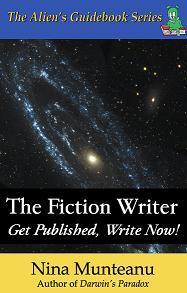
the creative process. Whether you’re writing
fiction or expressing yourself through “life” or “wellness” writing, my hope is
that The Journal Writer—like its predecessor The Fiction Writer: Get Published,Write Now! —will help you and others achieve your goal.
If you think The Journal Writer can give you
and others important life skills, please tell others about it! You can provide
a review on Amazon or email me (nina.sfgirl@gmail.com) with a testimonial that I can use to help
promote this book on helping others journal and write expressively.

The Journal Writer was commissioned by
Romanian publisher Calin Vlasie of Editura Paralela 45 , who had already
translated and published The Fiction Writer in 2011 ( Manual de Scriere Creativa. Scriitorul de fictiune ). I
attended the launch of The Fiction Writer in Bucharest in November 2011 and
drank copious amounts of Romania’s national drink Tuica (plum liquor that packs
a punch!) with my publisher.
Scriitorul de Jurnal: Descoperirea vocii
interioare ( The Journal Writer: Finding Your Voice ) was published by Editura
Paralela 45 and launched at the Gaudeamus Book Fair in Bucharest in November
2012.
Romanians can buy Scriitorul de Jurnal:Descoperirea vocii interioare ( The Journal Writer: Finding Your Voice ) on the
Editura Paralela 45 site and various other online bookstores.
About
Editura Paralela 45:
Editura Paralela 45 Publishing House was founded in November 1994 by Calin
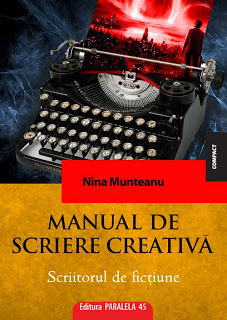
Vlasie. Over the years, the company specialized in the production of books,
magazines, newspapers and copybooks. Their main branch offices in Romania include
Bucharest and Cluj-Napoca.
They originally focused on educational books and contemporary Romanian
literature. Since 2000, editorial production diversified; they currently
publish Romanian and foreign literature, social and human sciences, philosophy,
history, religion, law, economics, science books, art books, practical books,
literature for children and teenagers, university textbooks, didactical methods
books, handbooks and auxiliary books.
Currently, Editura Paralela 45
Publishing House develops three series and 54 collections,
covering over 90 editorial areas including: biography, business, children, Christian,
college, fiction, computer, cookbooks, criticism, cultural studies, diet,
drama, education, enternainment, erotica, essays, family, fitness, food,
foreign languages, health, history, how to, language, law, lifestyle,
literature, mathematics, medical, memoir, parenting, philosophy, poetry,
psychiatry, reference, relationship, religion, school, science, self help,
software, spirituality, sports, teaching, technology.. Most of these
collections are registered with the State Office for Inventions and Trademarks
(OSIM). From 1994 to 2011, they have published over 3200 titles in over 13
million copies.
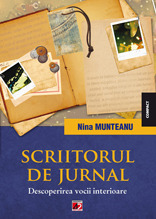
The publishing house participates in key book fairs in Europe (Paris,
London, Frankfurt, Bologna, Geneva, Tel Aviv, etc.) and has won numerous awards,
both for editorial work and its published books. Awards include: International
Book Fair "Gaudeamus" ("Excellence Award" in 2001 and
2008), the Writers Union of Romania, Association of Professional Writers in
Romania, Romanian Academy, the Writers' Union of Moldova, Romanian Publishers
Association, magazines "Cuvantul" "Romania literara", etc.,
the "Francophonie Award”, the Prix Saint-Exupery / ValeursJeunesse
(2006).
Editura Paralela 45 has translated and published numerous foreign
books (from English, French, German, Spanish, Portuguese, Russian, Serbian,
Swedish and so on). Foreign publishers that they worked with include: Harper
Collins, Ebury Press, A. M. Heath & Co, Hay House, MacMillan, Simon &
Schuster, Transworld (from UK), Curtis Brown, Facts On File, Grand Central
Publishing, Hyperion, Knopf Doubleday Group, Pearson Technology Group, Penguin
Group (USA), Albin Michel, Actes Sud, Calmann-Levy, Bayard, Robert Laffont,
Tallandier (France), Bertelsmann, Ullstein, Eichborn, Rowohlt (Germany). And now Starfire World Syndicate (USA)!
Published on May 14, 2013 19:29
May 8, 2013
Join Nina Munteanu at Indigo in Yorkdale Mall (Toronto area) for Book Signing of The Last Summoner
Published on May 08, 2013 19:29
May 2, 2013
Oblivion Review: Earth is a Memory Worth Fighting For...
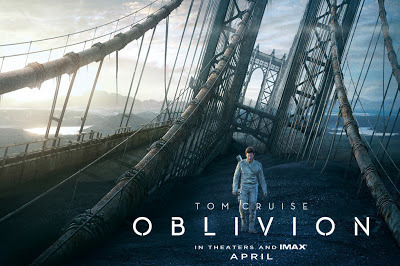
I just recently experienced the visually stunning motion picture
Oblivion in an IMAX theatre and I highly recommend it. Directed by Joseph
Kosinski (based on his graphic novel), this SF action thriller is worth seeing
on the big screen. It takes place in a devastated NYC (no longer recognizable
as a vast lonely landscape of buried skyscrapers and dried up rivers). It’s
2077, sixty years after aliens invaded and destroyed the moon and much of the
planet as consequence. This film is LARGE. Kosinki’s spectacular imagery and M83's other-wordly and evocative score must be seen large.

Technician Jack Harper (Cruise) and Victoria Olsen (Andrea Riseborough) are assigned to mop up the remaining resource extraction of a "fallen" Earth, before they join what's left of the human race, who have settled on Titan, Jupiter's moon. Victoria oversees operations and communicates with mission commander Sally (Melissa Leo) in the Tet (a large space station orbiting Earth) from the 3,000-foot high Sky Tower, a posh high-tech home/work station where she and Jack live. Meantime, Jack risks his life daily, servicing the droids that chase after "scavs" (remnant aliens), who keep sabotaging the giant resource harvesters.

Jack and Victoria have been stationed there for five years
and are due to leave in two weeks. Faced with the prospect of leaving Earth, Jack
grows maudlin for humanity’s home. Without disclosing to Victoria or Sally,
he’s been collecting Earth memorabilia (e.g., baseball cap, toys, sunglasses,
books); It doesn’t help matters that he is haunted by dreams of living in
pre-war NYC with another woman (Olga Kurylenko).
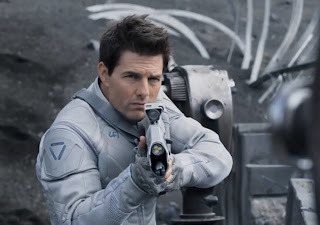
Every day Jack leaves his ultra clean and tidy Sky Tower
home and descends to Earth's gritty and dangerous landscape. On some level, he thrills in the place, finding a strong connection between its vast and lonely landscape and his own identity. Jack is a man in search of an identity; he was 'mindwiped', after all (to keep the scavs from getting important intel if he was ever captured). Jack desperately summons shadows of memories and collects Earth memorabilia every chance he gets. "Is it possible to miss a place you've never been, to mourn a time you've never lived?" he reflects. When he finally learns what he truly is and the heinous role he (and those like him) unknowingly played in the near-destruction of humanity, Jack does the only thing he can; he sacrifices himself to save what's left of humanity and those he loves: "If we have souls, they're made of the love we share. Undimmed by time, unbound by death."
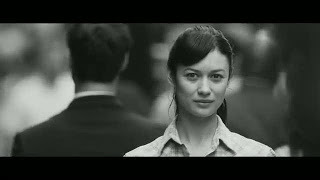
Showatcher.com calls Oblivion “a slick 21st century science fiction pulp
actioner” with genuinely amazing CGI and action set pieces. Showatcher adds
that “it was refreshing to witness a film that, though it did not break new
ground, held the attention of a jaded sci-fi audience.” A large part of its
attention appeal lies in its “techno-bass” musical score composed by Joseph Trapanese and Anthony Gonzalez with M83 (a French electronic/shoegaze band named after the spiral galaxy Messier 83). They elegantly orchestrated a score that was locked in step with the
narrative imagery of Claudio Miranda in a viscerally synchronized life-pulse.
The score surges and ebbs like an intelligent sea; at times assaulting the
senses with an open-throated tsunami of crushing sound; at others a throbbing caress
of longing nuance.
Many reviewers (see the litany on Rotten Tomatoes) have
trashed the film for various reasons, from plot holes and appropriation, mismanagement of suspense, to it being a Tom Cruise film. Peter Bradshaw of The Guardian calls Oblivion "bafflingly solemn, lugubrious and fantastically derivative sci-fi, which serves up great big undigested lumps of Total Recall, AI, Planet of the Apes--with little snippets of Top Gun."
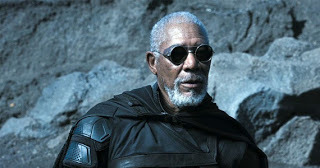
Roy Klabin of Policymic is less kind: “Unfortunately, I got to see an early
preview and doubt it will satisfy even the most dim-witted of audiences…the
film’s unsubtle commentary on our own use of robotics in warfare is lackluster
and anticlimactic…the weak story is sprinkled with a heavy dosing of famous
actors [with] wooden-faced expressionless performances.”
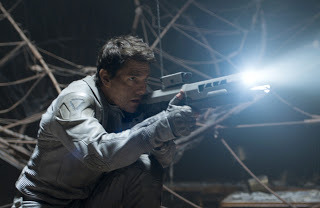
David Dizon of ABS-CBN News calls Oblivion “an idea-movie,
except the idea seems like a rehash of ideas from other, much better sci-fi
flicks.” He and others cite Mad Max, Moon, 2001: A Space Odyssey, Halo, Matrix,
and Star Wars Episode 1 as examples. Dizon calls Oblivion “a pretty movie
served cold.” He claimed that the movie’s sin wasn’t in the “idea” department,
but in the way it was executed.
I couldn’t disagree more on all counts.
Oblivion is not a “pretty movie” and certainly not served
cold. Vast. Beautiful. Eerie. Elegant. Visceral. Memorable. I also saw many
similarities with the various films Dizon and others mentioned (I would include
Bladerunner and Solaris in the mix). But here’s the thing: science fiction is
the literature of “the large”. SF metaphorically explores our evolution, the
meaning of our existence and our place in the universe through premise and idea.
It is not surprising that viewers will see similarities with other films in Kosinski’s
meditation on the nature of the soul, identity, self-actualization, love and
community.
Several reviewers suggest that the film flirts with such big
questions” yet makes no effort to fully answer them. Showatcher adds, "Where the film falls short is not in its visual styles; and its pacing can be forgiven in that it actually builds to a satisfying conclusion. The film falters with its need to include cliched action set-ups... the film addresses some very interesting questions of the human soul, religion, and the meditation of loneliness; however, it never takes it as far as it could. Instead we are left with a slick visual style and action scenes."

Good art always asks the big questions; unlike propaganda
and polemic, good art also lets the viewers answer those big questions for
themselves. This concept is not as palatable to North America’s multiplex
crowd, eager for easily accessed answers.
Some movies are like appetizers or snacks. Others, like Kosinki's Oblivion, returns the film experience to a full meal, engaging all one's senses and where sound (its own character) marries with setting and actors to create an epic and heart-thrilling experience. Like many things in life, and certainly in good art, the most potent aspect of communication lies in the often subtle and oblique non-verbal narrative. Good art "shows more than it "tells".
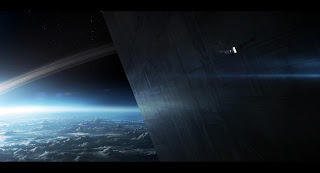
For those receptive to his art, Kosinski--like Kubrick in 2001: A Space Odyssey and Soderbergh in Solaris--lets the imagery and score express a sensual dance that invokes both mind and heart.
In the final analysis, Oblivion is a simple film dressed elegantly. Oblivion goes beyond surface plot constructs and intellectual proselytizing; it dives deep into thematic representation to pose questions on identity, love, community, and the meaning of "home". Rather than offer up a platter-full of rhetoric, Kosinsky keeps the narrative slim; instead, he provides us with a multi-filigreed tapestry of sensual possibility.
And choices.
After making the startling discovery of who and what he is, Jack transcends his "mind wipe" and remembers what is worth remembering. In a final scene, Jack tells Sally why he is doing what he must do, even though it means his certain death. He quotes from an old book that he'd picked up earlier in the movie (Lays of Ancient Rome narrated by Centurian Horatius): "to every man upon this earth death cometh soon or late. And how can a man die better than facing fearful odds, for the ashes of his fathers, and the temples of his Gods."

Ben Kendrick of “Screenrant” summarizes what lies at the
core of the film: “Oblivion could have easily been a convoluted and indulgent
movie-going experience; instead, the film keeps a restrained focus on Jack’s
character journey—which, thankfully, is an “effective team” of drama and
post-apocalyptic adventure.”
Do me a favor; when you go into the theatre to watch this film, park your intellectual self at the door and bring all your senses with you. This film needs to be FELT. Prepare to participate.
Published on May 02, 2013 18:58
April 29, 2013
Nina Munteanu Reads The Last Summoner at Alternative Grounds
Published on April 29, 2013 11:32
April 19, 2013
Anonymity: The Syndrome of Communicating More Only to Communicate Less
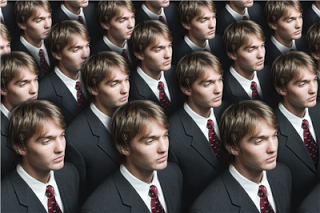
Recently, I had a great conversation with good friend David
Honigsberg as we sat in a Starbucks in Toronto, chugging back some coffee and
watching the world go by. Most people walked with iPhones or similar devices
glued to their hands; talking, texting or simply holding their precious cargo
like it meant the world to them. They’d be checking emails, updating their
Facebook page, talking with a friend, and surfing a favorite site.
I know…I
used to do the same thing. Until I gave
mine away.
After a whole suite of people had passed—virtually everyone
clutching their link to the world—David

and I turned to each other in
synchronicity. I thought he was going to remark on humanity’s co-dependency
with technology or our obsession with connecting, even if only superficially,
with the world. But he opened a topic that had nothing to do with it; or did
it?
He brought up the topic of anonymity. He’d recently written
to the National Post, a paper he esteems and highly respects, about their
apparent promotion of anonymous letters to the editor in the online version of
the newspaper vs. the print version, which requires a name and corresponding
contact information. Here’s his letter:

This brings up an interesting point about where we—and our
news media—are headed. With virtually all communications going digital,
individual and online (from books to news to movies), it is interesting to note
how differently we treat the online, more easily accessed, cousins to the print
versions.
Let me give you an example: I published my first ebook with
Liquid Silver in 2005 (when ebooks
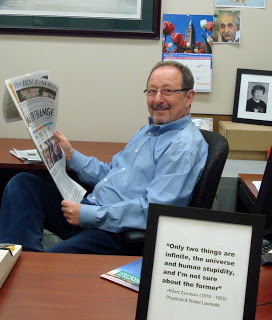
David Honigsberg
weren’t that popular yet; the iPhone hadn’t
made its debut and the ebook industry was in a chaotic mess re formats and
devices). While “Collision with Paradise” (now re-issued with eXtasy Books
under Kate Wylde) was a hit with its few readers and was praised by Romantic
Times and Yet Another Book Review, it hadn’t sold more than a thousand copies.
Ebooks now outsell their print cousins 3:1 with sales in the hundreds of
thousands for any given title.
Over the years I have observed a great difference in quality
between ebooks and their harder-to-get-published print books. And I know the
reason…
The easier something is to do or get, the less it will be
valued; the easier it is to communicate, the less likely it will have deep
meaning. Take the easy road, the slippery path, and you are sure to miss the view.
And isn’t that the very reason you were journeying in the first place?
Are we sacrificing the quality of our journey to reach our
destination, forgetting that the journey—living with meaning—is ‘part of that
destination’?
Texting every ten minutes. Updating your Twitter every hour.
Checking your Facebook page every few hours. Does that mean you are
communicating more?
I used to talk to a good friend almost every day. The chats
used to happen randomly but when we both had time to talk. We shared meaningful
things, what was important to each other’s life. We gave each other the gift of
time, compassion and understanding. Then as time passed, those calls became more routine and more rigidly
timed; while they occurred perhaps more often, the calls became shorter and
shorter, until soon nothing of meaning could be shared.
What does that have to do with anonymity? Everything.
When we do not cherish, preserve, and protect meaningful
communication, we give away our freedom to be the individuals we are. We throw
away our true gifts to the world. We turn into an anonymous society of
avatar-wannabes with no genuine identity; texting, chatting, surfing an
undifferentiated sea of information pixels.
If we do not say, “Here I am! This is what I believe!” those
very beliefs will eventually be taken from us. If it’s too easy, it won’t be
valued; if it isn’t valued, it will soon disappear altogether.
Anonymity is not the enabler of freedom of speech; it is its
harbinger of death.
Stand up and be counted. Or you will lose your most precious
thing: YOU.
Published on April 19, 2013 20:01
January 20, 2013
Welcome to 2013, The Year of the Snake
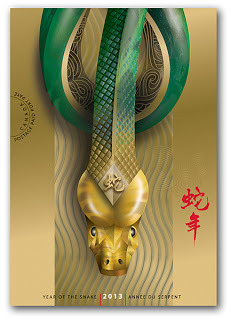
Happy
New Year!
When
I entered the post office recently to buy stamps I was reminded that 2013 is
also the year of the snake. The stamps displayed elaborate and stylized images
of the water snake in celebration of the Chinese Zodiac.
I’m
told by followers of the Chinese Zodiac that people born in snake years always seem to have money flowing their way. They are
described as intelligent, creative and adventurous. Chinese astrologers use the
color black to depict this year. Black is the color of space, the arctic night
and the darkness of the abyss and deep waters. The black snake, say the
astrologers, will bring people unexpected changes, instability and change. In
the wake of “the end of the world” and the dawning of a new age (the seventh
golden age) this is not surprising (see my last editorial).
I
was born in the “year of the horse” and checked out my prospects for the year
of the snake. They were mixed: I was told that “horse people should do
everything by themselves instead of turning to others. By that, they can get
good fortune. Also the expense will not be that much. In general, their fortune
will get better bit by bit.” (Oh boy! Looking forward to those bits!). Astrologers
told me that my career life would not be smooth but that I would make good
money (sigh with relief!). I was also advised that I should donate blood in
early 2013 because I might have an accident in this “snake” year (oh dear!); a
kind of karma-thing happening here, I guess! LOL!
Snakes
can be found on every continent except Antarctica. Biologists recognize over
3,400 species, ranging from the 10 centimeter Thread Snake to the reticulated
8.7 meter long Python. Most species are non-venomous. Snakes are thought to
have evolved from either burrowing or aquatic lizards during the mid-Cretaceous
Period.
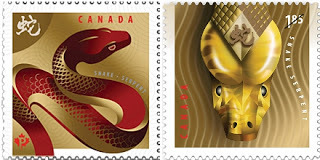
The
snake remains a mysterious creature, steeped in controversy. Considered vile
and “evil” by many, it often elicits strong feelings of dislike and fear. It is
an elegant cold-blooded reptile, and smooth to the touch (contrary to what most
people think: NOT slimy). The snake embraces a rich and metaphoric history,
representing a wide range of symbolism that encompasses change, metamorphosis
and transformation. In The Dictionary of
Mythology (1961) Gertrude Jobes recites a long list of symbols that span
from the wicked to the sublime. Perhaps her extensive alphabetized list serves
a good representation of this, our year 2013: androgyny, circle,
convalescence, cunning, danger, death, deceit, destruction, divine emanation,
evil, false appearance fertility, guardianship, generation, grief, health,
intelligence, jealousy, lasciviousness, malice, materialism, misfortune,
phallus, pleasure, power, prophecy, prudence, renewal, revenge, self- creation,
self -indulgence, self -sustenance sensation, sensuality, sin, subtlety,
temptation, treachery, the unfathomable, universe circle, vexations, vice,
wiliness, wisdom worldliness. Emblem of lightning, physicians, witchcraft.
J.E.
Cirlot in A Dictionary of Symbols
(1971) suggests that, “If all symbols are really functions and signs of things
imbued with energy, then the serpent or snake is, by analogy, symbolic of
energy itself—of force pure and simple; hence its ambivalence and
multi-valencies. Another reason for its great variety of symbolic meaning
derives from the consideration that these meanings may relate either to the
serpent as a whole or to any of its major characteristics—for example, to its
sinuous movements, its common association with the tree and its formal analogy
with the roots and branches of the tree, the way it sheds its skin, its
threatening tongue, the undulating pattern of its body, its hiss, its
resemblance to a ligament, its method of attacking its victims by coiling
itself round them, and so on.”
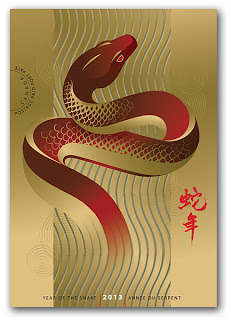
The serpent’s
portrayal as the most common symbol of God—in human psychology and spirituality
from Moses, to the Freemasons, Baptists and psychologist Carl Jung and many
others—has puzzled anthropologists for years. To Jung, the serpent reflected the
Omnipotent and Omnipresent power of God that lives within every human: “The serpent is an adversary and a symbol of enmity, but
also a wise bridge that connects right and left through longing, much needed by
our life… I have united with the serpent of the beyond. I have accepted
everything beyond into myself.”
The
ancient Tibetan Book of the Dead tells us that the darker side of one’s own
nature may reveal itself in serpentine form in the afterlife. It becomes
a mirror through which a person may encounter the feelings or thoughts they
repressed when alive.
Chaldeans
had only one word for life and snake. The snake’s elegant undulating form
symbolizes both soul and libido. In the Hindu tantric belief, it represents the
lotus of Kundalini, the coiled force of transcendence that begins at the base
of the spine and travels up the chakras toward enlightenment. In Indian
mythology, Lord Vishnu sits on a thousand-headed snake, which sets off the
primal vibration and the vital source of the Universe. Scholar and mythologist Joseph
Campbell suggested that the symbol of snakes coiled around a staff represents
the Kundalini physiology. The staff represents the spinal column with the
snake(s) being energy channels. In the case of two coiled snakes they usually
cross each other seven times, a possible reference to the seven energy centers
called chakras.
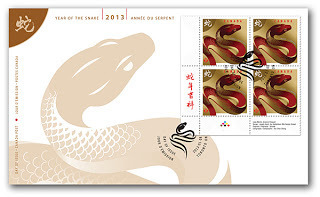
In
religion, mythology, and literature, serpents and snakes represent fertility and/or
a creative life force. As snakes shed their skin through sloughing they
symbolize rebirth, transformation, immortality, and healing. Snakes embrace the paradox of
creative-destruction in the form of an Ouroboros,
the serpent biting it’s own tail. It reflects a cyclic sexual union within
itself, a constant self–fecundation and a perpetual transformation from death
to life. The serpent represents sexual desire and passion in the
Abrahamic religion and Rabbinic tradition. The circle of the Ouroboros symbolizes eternity but only
through the perpetual cycle of regeneration: life from death. The Ouroboros is
a ubiquitous symbol of the “all-in-all”, the totality of existence, infinity
and the cyclic nature of the cosmos. Believed to have been inspired by the
Milky Way (“the serpent of light residing in the heavens”), Ancient Egyptians
associated it with serpent gods Wadjet and Hathor. Jormungandr, the World or
Midgard Serpent of Norse mythology encircled the world in the ocean’s abyss,
biting its own tail.
Every
night the Sun enters the underground world ruled by serpents, to become the
serpent itself in order to fight them and to reborn in the morning. The Vision Serpent of Mayan mythology lies atop the World Tree as a
symbol of rebirth.
Christianity
portrays the serpent negatively but sacred texts testify its double aspect. The
regenerating Christ itself is sometimes represented as a serpent on the cross.
During Medieval times the serpent on the cross was interpreted as the serpent
of Eve.
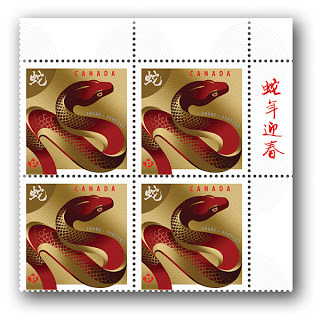
The
serpent-encircled staff of Asclepius, the God of medicine and healing, has
become the symbol of modern medicine. The snake's venom is associated with the
chemicals of plants and fungi that can heal, poison or provide expanded
consciousness. The snake was often considered one of the wisest animals. Its
divine aspect combined with its habitat in the earth between the roots of
plants made it an animal with chthonic properties connected to the afterlife
and immortality.
Serpents
often guard temples, sacred spaces and deities. At Angor in Cambodia, numerous
stone sculptures present hooded multi-headed nagas as guardians of temples and
other sacred sites.
In Ancient
Egypt, Ra and Atum became the same god, which took on the form of a serpent: The
two-headed serpent deity Nehebkau (he who harnesses the souls) guarded the
entrance to the underworld. He is often seen as the son of the snake goddess
Renenutet or Wadjet, the Egyptian cobra, the patron and protector of the country.
In
many myths the chthonic serpent lies coiled around a Tree of Life in a divine
garden. In the Genesis story of the Torah and Biblical Old Testament, the Tree
of the Knowledge of Good and Evil sits in the Garden of Eden together with the
Tree of Life and the serpent. In Greek mythology Ladon coiled around the tree in
the garden of the Hesperides, protecting the entheogenic golden apples.
Nidhogg, the dragon of Norse mythology, eats from the roots of the Yggdrasil,
the World Tree. Lastly, the Buddha sat in ecstatic meditation under the Bodhi
Tree of Enlightenment. When a storm arose, the mighty serpent king Mucalinda
rose up from his place beneath the earth and enveloped the Buddha in seven
coils for seven days, not to break his ecstatic state.
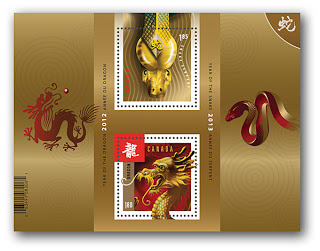
The image of
the serpent as the embodiment of the wisdom transmitted by Sophia was a Gnostic
emblem.
OK. So, what
does all of this have to do with 2013 and the Year of the Snake? Why, nothing…
Perhaps everything. It depends on whether you are mindful of the symbols around
you; whether you think and write metaphorically; whether you are fanciful and
whimsical; whether you appreciate the ancient wisdom of humanity and its link
to the divine… Whatever your inclination, I wish you a wonderful and productive
year of transformation and wonderful surprises. I for one am looking forward to
2013. I’ve decided to embrace the multi-faceted and transformative energy of
the snake and intuitively let my muse lead me here. Last year I began to
research and this year will be writing two books whose subjects are “medieval
wisdom in healing and wellness” and “water”. Appropriate, don’t you think?
Published on January 20, 2013 20:36


